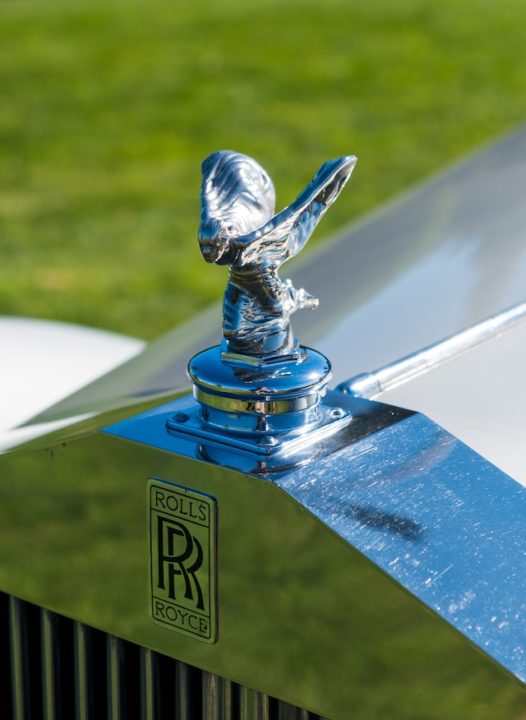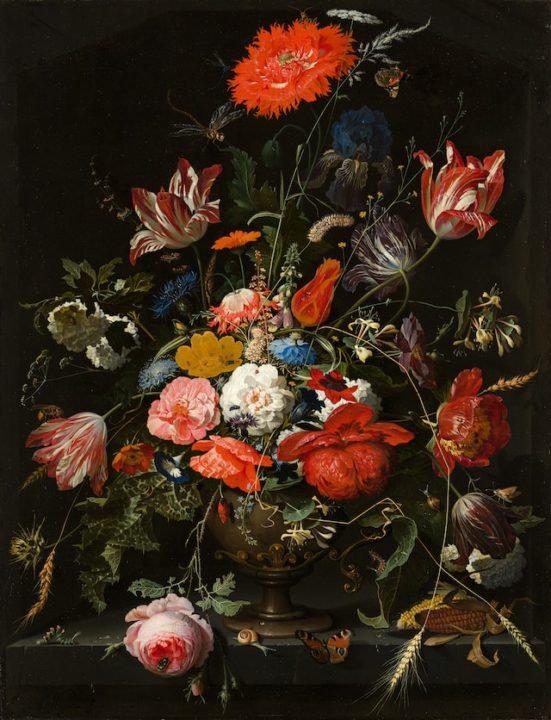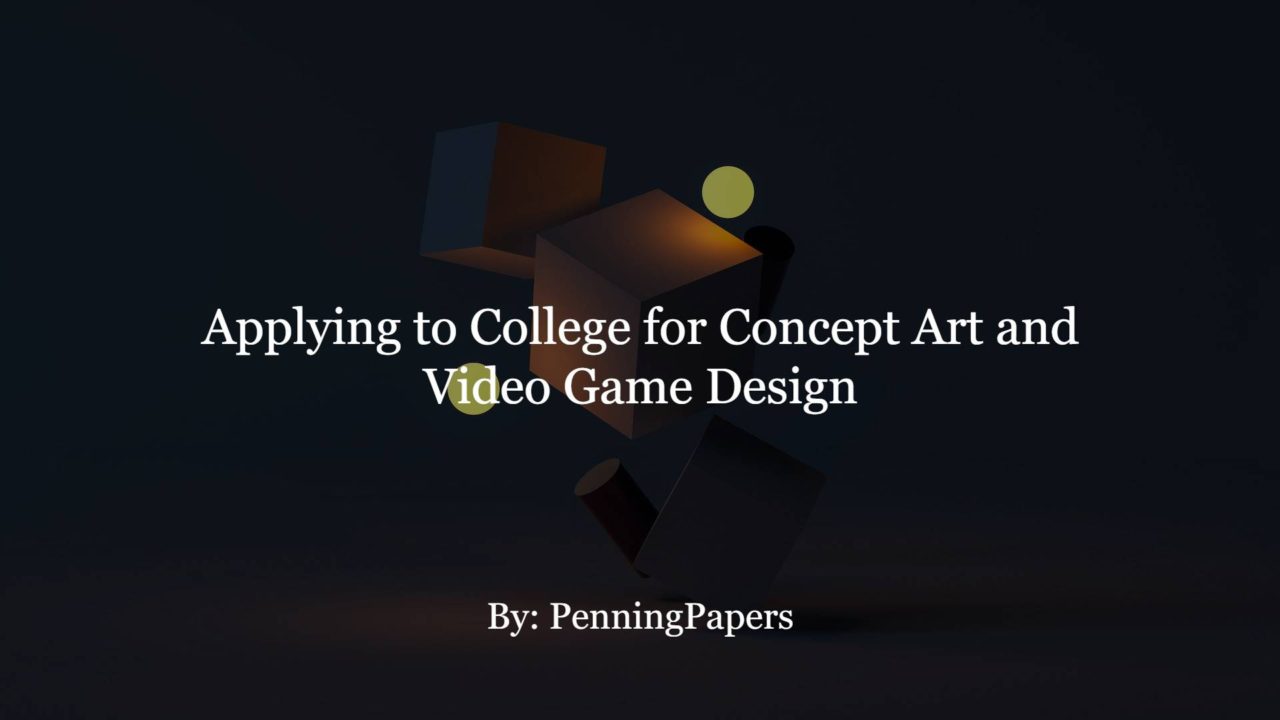In this article, I’ll be covering some of the valuable gems I’ve gathered after speaking with industry professionals about the college application process for concept artists.
This was originally a post I wanted to create on Reddit to help their A2C sub and provide some more art-related college content. But, I’m also going to be including 2 extra sections here on concept art and the college application process that I believe is going to be beneficial to you.
With that said, everything you read below is my guide!
Oh boy!
The past few weeks have been quite exciting; and, I’ve been fortunate enough to discover quite a lot more about the art and video game industry. I’ve read up a lot on the works of existing concept artists in the industry, and even had the chance to talk to some in person!
Of course, there seems to be more of a demand here on A2C for majors like computer science, medicine, finance, and other hard STEM fields; as such, this guide may not be for everyone.
But, I wanted to write this guide to hopefully guide some aspiring artists looking to make concept art/video game design into a career.
Note: This is by no means a comprehensive guide to Concept Art. This is just a conglomeration of what I’ve learned from others that I hope would help some of our art lurkers!
Table of Contents
- Choosing an Art College.
- “Education” Outside Your Curriculum.
- What Do I Need to Make it in the Industry?
- Prestige and Other Memes.
- Majoring in Something Else and Doing Concept Art/Game Design on the Side.
- Online Classes and Resources: An Alternative to Art School.
- The “Importance” of Art School and Major for Concept Art.
- Creating a Portfolio for Art School
Professional College Application Help.
Contact us. We'll get to you within 24 hours.
Choosing an Art College.

If you’re looking for top art colleges in the States, you may find a lot of results pop up. But, it’s up to you to do the research on whether these schools are going to be a solid fit for you. That is, does the school have the necessary resources and curriculum to fit your need as a concept artist?
You may notice that the school you’re researching has a lot of prestige and carries a strong name; but, their emphasis is more in fashion design or other fields outside of concept art. Realistically, a school that pours most of its resources into a discipline outside of concept art is not going to properly prepare you for the industry.
Sometimes, it’s not easy to know whether a school is going to be a good fit for you just based on its website or other online resources alone. In that case, I highly recommend speaking with current students in the school.
Sometimes, schools can be affiliated with certain video game studios and you can get lucky with an internship program that funnels you into the industry.
Asking existing students for their opinion is also crucial for understanding the school’s overall culture and environment. In particular, check to see if your desired school is challenging and prepares you with a rigorous curriculum that readies you for the industry. What does the quality of student work look like? Can you see visible growth from Freshman – Senior year?
If you’re looking to break into concept art and make it in a video game or film studio, you likely will find some good schools in California. Of course, this may not always be a viable option for some due to location and distance.
Perhaps the most important point is to do your research on the teachers. You need to make sure the teachers you’ll be learning under actually know what they’re talking about.
Unfortunately, in the world of concept art, it’s quite common for schools to employ teachers who really aren’t all that qualified to be teaching the subject. You may end up having to take courses from people who just aren’t going to help you. This isn’t just a waste of time, but it’s also taking away precious time you could be spending to hone your skills. Your teacher should be skilled enough in art and even be able to tell you what you need to improve on to be industry ready.
“Education” Outside Your Curriculum.

This is more of a side note. It’s more to do with how you spend your time as an artist rather than actually selecting a suitable art school.
But, it’s important nonetheless.
When it comes to having the skills in art needed to craft a solid portfolio, you are also a part of the equation. You can attend the best school with the best connections in the game industry. But, if you’re not putting in the elbow grease to practice your craft, fix your weaknesses, and follow through with your professor’s recommendations, you won’t improve as much as you should.
You may even find that you’ll learn a lot from actually doing your own research and practice outside of the classroom.
It’s not uncommon for students to feel that they learned a lot more from practicing and honing their art outside class hours.
Unfortunately, you may be stuck with some “useless classes.” These are going to be your English lit classes and your interpretive black-and-white abstract art courses. There’s nothing wrong with English and art in abstraction. But, ultimately, they’re not going to be conducive to a productive time building a solid portfolio that is industry ready.
What Do I Need to Make it in the Industry?

If you don’t do “insert random tryhard artist thing”, you’ll NEVER make it in the industry. /s
Jokes aside, becoming a concept art doesn’t seem to be a walk in the part. But, you probably already know this.
There’s always going to be pressure to create great art. Then, you have to make art fast. Then, great and fast. etc. etc.
If you’re still in college or looking to apply to art colleges for concept art, you probably don’t need to worry about getting super fast and super good real quick. If you’re still early in the art industry pipeline, it’s probably best for you to hone your motivation and workflow.
This means mastering a work rhythm that makes you productive without burning out. There’s no point in pulling off a bunch of all-nighters and wearing them like a badge of honor if you just end up too burnt out to continue practicing! The routine that gets you to practice art consistently and effectively whilst improving at a steady rate is going to be your best bet.
It’s also going to be VERY helpful to look at the art portfolios of existing concept artists. You can often look at their pieces and measure the gap in skill to determine what you need to be good enough.
Of course, all it takes is one look at the top 1% of Art Station to get easily discouraged. It’s not all that uncommon to see professionals conjuring fantastic pieces with Photoshop in 2 seconds what would take you months to make.
This brings us to the next point.
Perhaps one of the other most important elements to success is to make sure you can stay motivated for a long time without getting discouraged. A lot of artists can get easily discouraged by the expectations required of them. And, even when they make it into a notable game studio, they may find their work unappreciated by staff. This doesn’t apply to every game studio; but, it certainly happens.
So, you’ll need a strong stomach for the amount of practice, diligence, and consistency needed!
Prestige and Other Memes.

It’s going to be quite common for people (especially parents) to pressure you into applying to a college for their prestige. They may want you to choose a college that has a strong name. And, while that may be an understandable perspective, a notable college may not always be the best fit for you.
If you’re dedicated to pursuing concept art for a living, you’ll need to look at available resources and make a decision from there.
More often than not, your parents are not going to know enough about the college admissions process or the art industry to truly help you come to a solid and informed conclusion.
Sometimes, representatives from art schools will come to your school’s campus and do presentations. These often are presentations where they show how cool, fun, and exciting the school is and how it would be great for everyone to attend. It’s not uncommon for them to talk about the school’s reputation, weird traditions, and other meme-factors. But, at the end of the day, getting a career in concept art is not going to be easy. So, you’ll need to pay special attention to the things that actually matter like the experience faculty and teachers have, opportunities for getting into game studios, etc.
Majoring in Something Else and Doing Concept Art/Game Design on the Side.

“I want to pursue concept art on the side. I’m not quite sure about the stability of the field; so, I want to major in something like finance or business as a backup in case art doesn’t work.”
I’ve addressed this problem before in the past. But, I’ll repeat what I think below.
Breaking into the concept art and game design industry isn’t simple. There’s a lot of introspection, hard work, and diligence required to really make it. It demands a level of self-motivation that most students out of college, let alone students in their early 20s, tremendously lack.
And, not everyone really even knows whether they want to pursue concept art while they’re still in school. They may still be full of doubt and questions!
So, if you’re uncertain about your ability to make it in the industry or you’re scared of job security, you can pursue a safe major at a non-art school and learn art on the side.
But, there’s a catch.
If you’re doing art on the side while attending a non-art school taking a non-art major, you’ll be putting in A LOT of work.
On top of your classes outside of art, you’ll be learning everything you can about concept art and trying to make it in the industry without the resources other students may have.
Thus, if you want to pursue another major and do concept art on the side, I would heavily recommend having a strict schedule where you do at least a few hours of art every day to hone your skills. This is going to require a lot of time. Ultimately, it’s up to you to determine what is best for you.
Online Classes and Resources: An Alternative to Art School.

Don’t want to go $90,000 in debt for something that you don’t know will yield proper results!
You’re not alone! A lot of other students are hesitant to spend their parents’ money on 4 years of college with uncertain results. And besides, only a small minority of students end up getting good enough to really be industry ready!
If you are looking for low-cost resources that can still give you quality industry-level education, online art schools can do wonders! Worthwhile classes are often taught by industry professionals who know how to guide you and help you develop the skills you actually need to make it.
Usually, these classes put you in a pool with other students where you watch a video. Then, you and the rest of the class are given an assignment (for example: create and design an original character who has “x” personality and has “y” attributes). This assignment is important because it’s used as a measure to determine what your strengths are and where you need to improve to create a solid portfolio.
You can think of these classes as budget-friendly college courses with all the extraneous stuff that constitutes a traditional art college cut-off.
The “Importance” of Art School and Major for Concept Art

In general, the notoriety and name of the art school you attend are NOT going to have an impact on your ability to land a concept art position. If you’re vying for a position in the video games or game design industry, you’re not going to need a prestigious name to carry you into the studio.
In the same vein, you won’t need a specific major to qualify for a position in concept art. It does, however, help to major in something related such as illustration or design.
Ultimately, what determines your success in landing a job in concept art is whether you have a solid portfolio. If you’re researching which colleges to apply to, you should consider looking into the major curriculum to determine which classes are actually going to have useful content that can shoehorn you into your career.
There are, of course, exceptions to this rule.
For some startups that have low funding, you may find it easier to land concept art positions as an intern. You may get away with lower-quality work with a strong college name. But, ultimately, these experiences are not going to be conducive to what you truly need to make it in a larger company.
The school name, major name, and other extraneous details are not going to contribute to helping you build a solid portfolio that will help you get into a large studio. So, do your research on which art schools to apply to!
Creating a Portfolio for Art School

One of the funny things I’ve heard from other artists is just how often their peers, family, and others outside the art world praise their work.
“Oh wow! Your work is so good! Disney/ miHoYo/ Bethesda/ Riot/ Blizzard should totally take you in!”
Yet, these compliments often fall short of satisfactory. This isn’t due to any ill-will or anything. Rather, it’s because the general public isn’t exactly a good judge of whether someone has work that is strong enough for the industry.
In fact, your high school is likely NOT equipped with the right professional expertise to determine whether you have a portfolio that is ready for an art college.
Even at the best-funded schools, the best you may get is your AP Studio Art teacher glancing at your work and going, “Hey, that’s pretty good! Good luck getting into Art Center! *thumbs-up motion.*”
When you’re out of college and looking to break into the concept art workforce, you’ll need an expert’s eye to determine how strong your portfolio is; and, it’s often the case that those outside of the industry can often give differing and even incorrect advice.
This especially happens when the family is involved.
Now, if you’re looking to apply to art colleges to later land a position as a concept artist, you’re probably not going to be thinking of creating an industry-level portfolio quite yet. So, the real question may be this: how good does your high-school level portfolio need to be to get accepted into an art college?
And, well, that depends!
Some colleges have actually started to lower their standards for what they deem “good enough” to get accepted. Others have increased it. Some have subtly started accepting students for financial purposes rather than the quality of their portfolios.
So, it’s not easy to know just how good it needs to be.
If you’re applying to art colleges at the high school level, we heavily recommend speaking with 2 people for the best results.
- An AP art or studio art instructor.
- An industry professional (one from your respective major) or a professional art college consultant.
If you can have these two opinions, you’ll know what steps you need to create a solid portfolio that helps you stand out amongst the rest of the admissions pool.
If you are looking for professional art school consulting, need advising, or would just like help with your art school applications as a whole, we’re here to help! Schedule a free consultation with us, and we’ll get back to you within 24 hours with professional advice and consulting!

